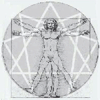The third thing, which at once attracted my attention and of which I began to think the very first time I heard of it, was the idea of the moving center. The chief thing that interested me here was the question of the relation in which G. placed moving functions to instinctive functions. Were they the same thing or were they different? And further, in what relation did the divisions made by G. stand to the divisions customary in ordinary psychology? With certain reservations and additions I had considered it possible to accept the old divisions, that is, to divide man’s actions into “conscious” actions, “automatic” actions (which must at first be conscious), “instinctive” actions (expedient, but without consciousness of purpose), and “REFLEXES,” simple and complex, which are never conscious and which can, in certain cases, be inexpedient. In addition there were actions performed under the influence of hidden emotional dispositions or inner unknown impulses. Fragments: Six
But G. did not call actions governed by the moving center “automatic.” He used the name “automatic” only for the actions which a man performs imperceptibly for himself. If the same actions are observed by a man, they cannot be called “automatic.” He allotted a big place to automatism, but regarded the moving functions as distinct from the automatic functions, and, what is most important, he found automatic actions in all centers; he spoke, for instance, of “automatic thoughts” and of “automatic feelings.” When I asked him about REFLEXES he called them “instinctive actions.” And as I understood from what followed, among external movements he considered only REFLEXES to be instinctive actions. Fragments: Six
First of all G. drew attention to the constant misuse of the words “instinct” and “instinctive.” It transpired from what he said that these words could be applied, by rights, only to the inner functions of the organism. The beating of the heart, breathing, the circulation of blood, digestion — these were instinctive functions. The only external functions that belong to this category are REFLEXES. The difference between instinctive and moving functions was as follows: the moving functions of man, as well as of animals, of a bird, of a dog, must be learned; but instinctive functions are inborn. A man has very few inborn external movements; an animal has more, though they vary, some have more, others have less; but that which is usually explained as “instinct” is very often a series of complex moving functions which young animals learn from older ones. One of the chief properties of the moving center is its ability to imitate. The moving center imitates what it sees without reasoning. This is the origin of the legends that exist about the wonderful “intelligence” of animals or the “instinct” that takes the place of intelligence and makes them perform a whole series of very complex and expedient actions. Fragments: Six

